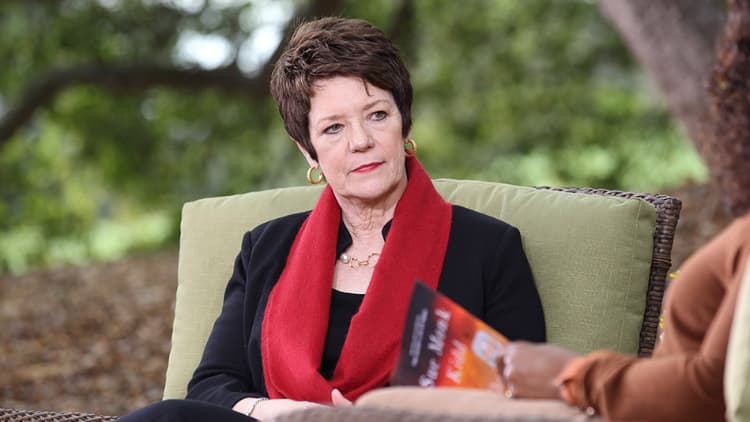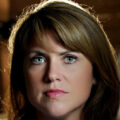Margaret Atwood Biography
Margaret Atwood is a Canadian poet, novelist, literary critic, essayist, inventor, teacher, and environmental activist. Since 1961, she has published seventeen books of poetry, sixteen novels, ten books of non-fiction, eight collections of short fiction, eight children’s books, and one graphic novel, as well as a number of small press editions in poetry and fiction.
Atwood and her writing have won numerous awards and honors including the Man Booker Prize, Arthur C. Clarke Award, Governor General’s Award, Franz Kafka Prize, and the National Book Critics and PEN Center USA Lifetime Achievement Awards.
Margaret Atwood Age
Margaret Eleanor Atwood was born on November 18, 1939, in Ottawa, Ontario,
Margaret Atwood Family
she is the second of three children of Carl Edmund Atwood, an entomologist, and Margaret Dorothy, a former dietitian, and nutritionist from Woodville, Nova Scotia. Because of her father’s ongoing research in forest entomology.
Margaret Atwood Husband
In 1968, Atwood married Jim Polk, an American writer; they divorced in 1973. She formed a relationship with fellow novelist Graeme Gibson soon afterward and moved to a farm near Alliston, Ontario, where their daughter, Eleanor Jess Atwood Gibson, was born in 1976. The family returned to Toronto in 1980.
Margaret AtwoodMargaret Atwood Education
She attended Leaside High School in Leaside, Toronto, and graduated in 1957. Atwood began writing plays and poems at the age of six. In 1957, she began studying at Victoria College in the University of Toronto, where she published poems and articles in Acta Victoriana, the college literary journal, and participated in the sophomore theatrical tradition of The Bob Comedy Revue.
Her professors included Jay Macpherson and Northrop Frye. She graduated in 1961 with a Bachelor of Arts in English (honors) and minors in philosophy and French. In 1961 Atwood began graduate studies at Radcliffe College of Harvard University, with a Woodrow Wilson fellowship. She obtained a master’s degree (MA) from Radcliffe in 1962 and pursued doctoral studies for two years, but did not finish her dissertation, The English Metaphysical Romance.
Margaret Atwood Career
Atwood’s first book of poetry, Double Persephone, was published as a pamphlet by Hawkshead Press in 1961, winning the E.J. Pratt Medal. While continuing to write, Atwood was a lecturer in English at the University of British Columbia, Vancouver, from 1964 to 1965, Instructor in English at the Sir George Williams University in Montreal from 1967 to 1968, and taught at the University of Alberta from 1969 to 1970 In 1966, The Circle Game was published, winning the Governor General’s Award.
This collection was followed by three other small press collections of poetry: Kaleidoscopes Baroque: a poem, Cranbrook Academy of Art (1965); Talismans for Children, Cranbrook Academy of Art (1965); and Speeches for Doctor Frankenstein, Cranbrook Academy of Art (1966); as well as, The Animals in That Country (1968). Atwood’s first novel, The Edible Woman, was published in 1969. As a social satire of North American consumerism, many critics have often cited the novel as an early example of the feminist concerns found in many of Atwood’s works.
Atwood taught at York University in Toronto from 1971 to 1972 and was a writer-in-residence at the University of Toronto during the 1972/1973 academic year. A prolific period for her poetry, Atwood published six collections over the course of the decade: The Journals of Susanna Moodie (1970), Procedures for Underground (1970), Power Politics (1971), You Are Happy (1974), Selected Poems 1965–1975 (1976), and Two-Headed Poems (1978). Atwood also published three novels during this time: Surfacing (1972); Lady Oracle (1976); and Life Before Man (1979), which was a finalist for the Governor General’s Award.
Surfacing, Lady Oracle, and Life Before Man, like The Edible Woman, explore identity and social constructions of gender as they relate to topics such as nationhood and sexual politics.In particular, Surfacing, along with her first non-fiction monograph, Survival: A Thematic Guide to Canadian Literature (1972), helped establish Atwood as an important and emerging voice in Canadian literature. In 1977 Atwood published her first short story collection, Dancing Girls, which was the winner of the St. Lawrence Award for Fiction and the award of The Periodical Distributors of Canada for Short Fiction. By 1976 interest in Atwood, her works, and her life were high enough that Maclean’s declared her to be “Canada’s most gossiped-about writer.”
Atwood’s reputation as a writer continued to grow with the publication of the novels The Robber Bride (1993), finalist for the 1994 Governor General’s Award and shortlisted for the James Tiptree Jr. The award, and Alias Grace (1996), winner of the 1996 Giller Prize, a finalist for the 1996 Booker Prize, a finalist for the 1996 Governor General’s Award, and shortlisted for the 1997 Orange Prize for Fiction. Although vastly different in context and form, both novels use female characters to question good and evil and morality through their portrayal of female villains.
As Atwood noted about The Robber Bride, “I’m not making a case for evil behavior, but unless you have some women characters portrayed as evil characters, you’re not playing with a full range.”The Robber Bride takes place in contemporary Toronto, while Alias Grace is a work of historical fiction detailing the 1843 murders of Thomas Kinnear and his housekeeper Nancy Montgomery. Atwood had previously written the 1974 CBC made-for-TV film The Servant Girl, about the life of Grace Marks, the young servant who, along with James McDermott, was convicted of the crime.
Margaret Atwood Novels
In 2000 Atwood published her tenth novel, The Blind Assassin, to critical acclaim, winning both the Booker Prize and the Hammett Prize in 2000. The Blind Assassin was also nominated for the Governor General’s Award in 2000,[20] Orange Prize for Fiction, and the International Dublin Literary Award in 2002. In 2001, Atwood was inducted into Canada’s Walk of Fame.
Atwood followed this success with the publication of Oryx and Crake in 2003, the first novel in a series that also includes The Year of the Flood (2009) and MaddAddam (2013), which would collectively come to be known as the MaddAddam Trilogy. The apocalyptic vision in the MaddAddam Trilogy engages themes of genetic modification, pharmaceutical and corporate control, and man-made disaster.
As a work of speculative fiction, Atwood notes of the technology in Oryx and Crake, “I think, for the first time in human history, we see where we might go. We can see far enough into the future to know that we can’t go on the way we’ve been going forever without inventing, possibly, a lot of new and different things.”She later cautions in the acknowledgments to MaddAddam, “Although MaddAddam is a work of fiction, it does not include any technologies or bio-beings that do not already exist, are not under construction or are not possible in theory.”
In 2005 Atwood published the novella The Penelopiad as part of the Canongate Myth Series. The story is a retelling of The Odyssey from the perspective of Penelope and a chorus of the twelve maids murdered at the end of the original tale. The Penelopiad was made into a theatrical production in 2007. In 2016 Atwood published the novel Hag-Seed, a modern-day retelling of Shakespeare’s The Tempest, as part of Penguin Random House’s Hogarth Shakespeare Series.
On November 28, 2018, Atwood announced that she will publish The Testaments, a sequel to The Handmaid’s Tale, in September 2019. The novel will feature three female narrators and takes place fifteen years after the character Offred’s final scene in The Handmaid’s Tale.
Margaret Atwood lectures
Non-fiction
In 2008 Atwood published Payback: Debt and the Shadow Side of Wealth, a collection of five lectures delivered as part of the Massey Lectures from October 12 to November 1, 2008. The book was released in anticipation of the lectures, which were also recorded and broadcast on CBC Radio One’s Ideas.
Chamber opera
In March 2008, Atwood accepted her first chamber opera commission. Commissioned by City Opera of Vancouver, Pauline is set in Vancouver in March 1913 during the final days of the life of Canadian writer and performer Pauline Johnson. Pauline, composed by Tobin Stokes with a libretto by Atwood, premiered on May 23, 2014, at Vancouver’s York Theatre.
Graphic fiction
In 2016 Atwood began writing the superhero comic book series Angel Catbird, with co-creator and illustrator Johnnie Christmas. The series protagonist, scientist Strig Feleedus, is a victim of an accidental mutation that leaves him with the body parts and powers of both a cat and a bird. As with her other works, Atwood notes of the series, “The kind of speculative fiction about the future that I write is always based on things that are in the process right now. So it’s not that I imagine them, it’s that I notice that people are working on them and I take it a few steps further down the road. So it doesn’t come out of nowhere, it comes out of real life.”
Future Library project
With her novel Scribbler Moon, Atwood is the first contributor to the Future Library project. The work, completed in 2015, was ceremoniously handed over to the project on 27 May of the same year. The book will be held by the project until its eventual publishing in 2114. She thinks that readers will probably need a paleo-anthropologist to translate some parts of her story. In an interview with the Guardian newspaper, Atwood said, “There’s something magical about it. It’s like Sleeping Beauty. The texts are going to slumber for 100 years and then they’ll wake up, come to life again. It’s a fairytale length of time. She slept for 100 years.”
The invention of the LongPen
In early 2004, while on the paperback tour in Denver for her novel Oryx and Crake, Atwood conceived the concept of a remote robotic writing technology, what would later be known as the LongPen, that would enable a person to remotely write in ink anywhere in the world via tablet PC and the Internet, thus allowing her to conduct her book tours without being physically present.
She quickly founded a company, Unotchit Inc., to develop, produce and distribute this technology. By 2011, Unotchit Inc. shifted its market focus into business and legal transactions and was producing a range of products, for a variety of remote writing applications, based on the LongPen technologies and renamed itself to Syngrafii Inc. As of September 2014, Atwood is still Co-founder and a Director of Syngrafii Inc. and holder of various patents related to the LongPen technology.
Margaret Atwood Awards and honors
Atwood holds numerous honorary degrees (e.g., from Oxford University, Cambridge University, and the Sorbonne), and has won more than 55 awards in Canada and internationally.
- Governor General’s Award, 1966, 1985
Companion of the Order of Canada, 1981
Guggenheim fellowship, 1981
Los Angeles Times Fiction Award, 1986
American Humanist Association Humanist of the Year, 1987
Nebula Award, 1986 and Prometheus Award, 1987 nominations, both science fiction awards.
Arthur C. Clarke Award for Best Science Fiction.
Foreign Honorary Member of the American Academy of Arts and Sciences, 1988
Canadian Booksellers Association Author of the Year, 1989
Trillium Book Award, 1991, 1993, 1995.
Government of France’s Chevalier dans l’Ordre des Arts et des Lettres, 1994
Helmerich Award, 1999, by the Tulsa Library Trust.
Booker Prize, 2000
Kenyon Review Award for Literary Achievement, 2007
Prince of Asturias Award for Literature, 2008
Nelly Sachs Prize, Germany, 2010
Dan David Prize, Israel, 2010
Queen Elizabeth II Diamond Jubilee Medal, Canada, 2012
Los Angeles Times Book Prize “Innovator’s Award”, 2012
Gold medal of the Royal Canadian Geographical Society, 2015
Golden Wreath of Struga Poetry Evenings, Macedonia, 2016
Franz Kafka Prize, Czech Republic, 2017
Peace Prize of the German Book Trade, Germany, 2017
Companion of Honour, 2019
Honorary degrees
- Trent University, 1973
Queen’s University, 1974
Concordia University, 1979
Smith College, 1982
University of Toronto, 1983
University of Waterloo, 1985
University of Guelph, 1985
Mount Holyoke College, 1985
Victoria College, 1987[160]
Université de Montréal, 1991
University of Leeds, 1994
McMaster University, 1996
Lakehead University, 1998
University of Oxford, 1998
Algoma University, 2001
University of Cambridge, 2001
Dartmouth College, 2004
Harvard University, 2004
Université de la Sorbonne Nouvelle, 2005
National University of Ireland, Galway, 2011
Ryerson University, 2012
Royal Military College of Canada (LLD), 16 November 2012
University of Athens, 2013
University of Edinburgh, 2014
Margaret Atwood salary
Margaret Atwood Net Worth: $20 Million.
Margaret Atwood Twitter
About InformationCradle Editorial Staff
This Article is produced by InformationCradle Editorial Staff which is a team of expert writers and editors led by Josphat Gachie and trusted by millions of readers worldwide.
We endeavor to keep our content True, Accurate, Correct, Original and Up to Date. For complain, correction or an update, please send us an email to informationcradle@gmail.com. We promise to take corrective measures to the best of our abilities.






